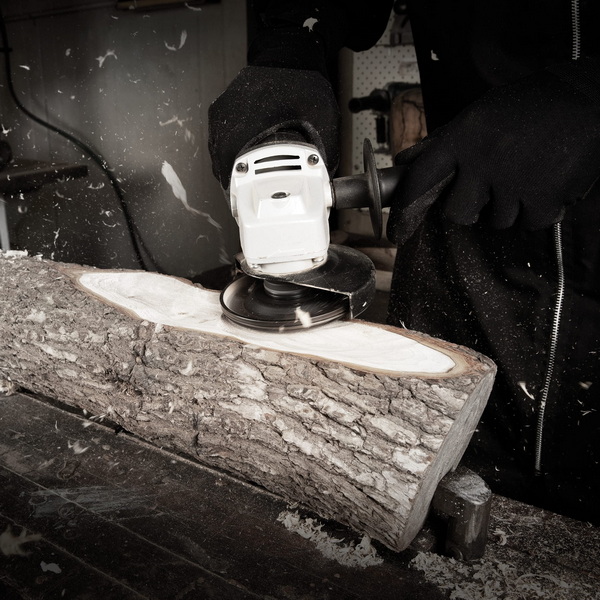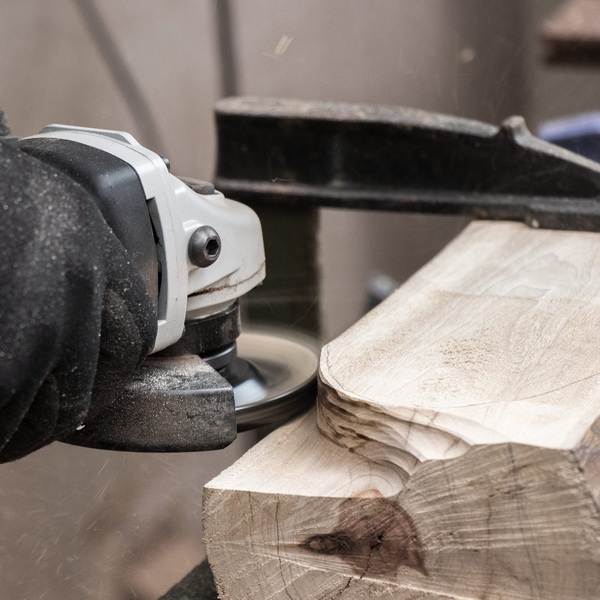Content Menu
● Overview of Carbide Saw Tips
● Advantages of Carbide Saw Tips
>> Superior Hardness and Wear Resistance
>> Longer Tool Life
>> Exceptional Cutting Quality
>> Versatility Across Materials
>> Heat Resistance
>> Cost Efficiency
● Types of Carbide Used in Saw Tips
● Key Features to Look For in Carbide Saw Tips
● Application: Woodworking vs. Metal Cutting
>> Woodworking Applications
>>> Key Woodworking Features:
>> Metal Cutting Applications
>>> Key Metal Cutting Features:
● Manufacturing Process of Carbide Saw Tips
● Selecting the Right Carbide Saw Tips
● Maintenance and Replacement
● Industry Innovations in Carbide Saw Tips
● Advanced Usage Tips for Maximum Efficiency
● Environmental Considerations
● Conclusion
● Frequently Asked Questions (FAQ)
>> 1. What makes carbide saw tips better than regular steel tips?
>> 2. Can carbide saw tips be sharpened, or do they always need to be replaced?
>> 3. Are certain carbide grades better for woodworking or metal cutting?
>> 4. How do I know when a carbide saw tip needs replacement?
>> 5. How important is OEM customization for carbide saw tips?
Carbide saw tips have revolutionized the saw blade industry, bringing unmatched durability, precision, and versatility to both woodworking and metal cutting applications. Choosing the right carbide saw tips can dramatically improve cutting efficiency, extend tool life, and deliver cleaner results. This comprehensive guide explores the features, advantages, selection criteria, manufacturing processes, and maintenance strategies for carbide saw tips. With a focus on optimization for professionals and hobbyists, this article provides a deep dive into the best carbide saw tips for woodworking and metal cutting.

Overview of Carbide Saw Tips
Carbide saw tips are cutting tool inserts, brazed or welded onto the teeth of circular saw blades or band saws. Made from tungsten carbide—a combination of tungsten and carbon—they offer a unique combination of hardness and wear resistance. Because carbide is significantly harder and more heat-resistant than steel, these tips enable saw blades to maintain a sharper cutting edge for longer periods, reduce downtime for blade changes, and increase productivity for both woodworking and metal cutting.
Advantages of Carbide Saw Tips
Superior Hardness and Wear Resistance
Carbide, primarily composed of tungsten carbide particles bonded together with metallic cobalt, is renowned for its extreme hardness. This property allows carbide saw tips to effortlessly slice through hardwoods, metals, plastics, and composites, outlasting ordinary steel tips by several factors.
Longer Tool Life
While high-speed steel (HSS) tips may wear quickly, carbide saw tips can often last several times longer under similar conditions, minimizing tool replacement and downtime.
Exceptional Cutting Quality
Carbide saw tips create cleaner, smoother cuts due to their ability to retain ultra-sharp edges, which reduces post-processing work like sanding or deburring.
Versatility Across Materials
From hardwood, plywood, laminate, MDF, and chipboard in woodworking to aluminum, copper, steel, and stainless steel in metal cutting, carbide saw tips adapt to a wide range of materials.
Heat Resistance
Carbide tips withstand high-temperature cutting environments, maintaining structural integrity and edge sharpness during prolonged and high-speed operations.
Cost Efficiency
Although carbide tips may come with a higher upfront cost than standard steel tips, their extended lifespan and reduced need for frequent sharpening or replacement make them highly cost-effective in the long run.
Types of Carbide Used in Saw Tips
Carbide grades differ in composition and mechanical properties, making it necessary to choose the right grade depending on the application.
| Type | Composition | Best For | Notable Properties |
| C1 Carbide | High tungsten, low cobalt | Wood, soft metals | Very hard, brittle, highly heat-resistant |
| C2 Carbide | Balanced composition | General-purpose, wood, some metals | Good toughness and wear resistance |
| C3 / C4 Carbide | Higher cobalt content | Hard metals, tough materials | Greater shock resistance and impact toughness |
Using the correct carbide grade ensures optimal tool life and cutting performance, especially when switching between woodworking and metal cutting tasks.
Key Features to Look For in Carbide Saw Tips
- Carbide Grade: Determines hardness, toughness, and wear resistance.
- Tip Geometry: Shapes such as sharpened points, bevels, and angles influence cut precision and suitability for specific materials.
- Brazing Quality: Secure attachment to prevent tip loss or failure.
- Tip Size and Consistency: Uniform sizing provides balanced cutting action, reducing vibration.
- Surface Finish: Smooth finishes reduce friction and heat generation.
- Coatings: Proprietary coatings, like titanium nitride (TiN) or chromium-based layers, enhance durability, reduce corrosion, and improve cutting ability.
Application: Woodworking vs. Metal Cutting
Woodworking Applications
Carbide saw tips in woodworking are ideal for precision, high-speed cutting of hardwoods, softwoods, MDF, laminate, and engineered panels. The right tip geometry and blade design ensure cleaner cuts, reduced splintering, and longer tool life.
Key Woodworking Features:
- Alternate Top Bevel (ATB): Offers clean crosscuts with minimal tear-out.
- Triple Chip Grind (TCG): Effective for laminates and composite materials that are prone to chipping.
- Thin-Kerf Blades: Reduce waste material and offer less resistance during cuts.
- Anti-Vibration Slots: Help to dampen blade vibrations, resulting in smoother cuts and reduced noise.
Metal Cutting Applications
Carbide saw tips designed for metal cutting require increased toughness to withstand impact and abrasion. Metal cutting blades have different tooth shapes and compositions compared to woodworking blades, optimized for clean, burr-free cuts.
Key Metal Cutting Features:
- Negative or Neutral Rake Angles: Provide controlled chip formation and reduced tool stress.
- Flat-Top or TCG Grinds: Achieve sharp edges necessary for cutting metals effectively.
- Tooth Count and Gullet Size: Sized according to metal thickness and type for efficient chip evacuation.
- Advanced Coatings: Reduce heat buildup and friction during high-speed cutting, prolonging tip life.

Manufacturing Process of Carbide Saw Tips
Producing high-quality carbide saw tips involves several precise stages:
1. Powder Preparation: Tungsten and carbon powders are mixed with cobalt binder and sintered at high temperatures (approximately 1400°C) to form dense carbide blanks.
2. Shaping: The blanks are ground to exact dimensions and geometric shapes suited for saw blade teeth.
3. Brazing: Carbide tips are brazed onto steel blade teeth with precision, ensuring a strong bond that withstands strenuous cutting conditions.
4. Grinding & Polishing: The tips are ground to final cutting geometries and polished to reduce friction, which aids cutting performance.
5. Coating (Optional): Some carbide tips receive additional coatings for enhanced wear resistance or corrosion protection.
Selecting the Right Carbide Saw Tips
When choosing carbide saw tips, several factors should be considered:
- Material Type: Identify the primary materials to cut to select the ideal carbide grade and tip configuration.
- Cutting Parameters: Blade diameter, tooth count, and machine speed impact blade-tip compatibility.
- Environmental Conditions: Moisture, dust, and heat exposure can influence tip performance and durability.
- Cost vs. Performance: Evaluate long-term savings from durable carbide tips against initial costs.
- OEM Customization: Customized carbide tip solutions tailored to specific industrial workflows improve efficiency and reduce operational costs.
Maintenance and Replacement
Maintaining carbide saw tips extends their lifespan and ensures consistent cutting quality:
- Regular Cleaning: Remove resin and debris to prevent buildup that affects blade balance and cut quality.
- Proper Storage: Keep blades dry and protected from humidity to prevent corrosion of the steel substrate and carbide tips.
- Sharpening: Utilize professional carbide blade sharpening services capable of maintaining precise tip geometry.
- Inspection: Routinely check for worn, chipped, or cracked tips and replace as needed to avoid poor cuts or blade damage.
- Correct Usage: Match the blade and tip type to your material and avoid aggressive feeding rates to reduce premature wear.
Industry Innovations in Carbide Saw Tips
Technological progress drives ongoing improvements in saw tip effectiveness:
- Nanostructured Carbides: Engineered at the microscopic scale to provide better toughness and resistance to wear.
- Improved Brazing Methods: Minimize thermal stress and enhance bond strength for more durable tips.
- Advanced Coatings: Multi-layer coatings improve hardness, reduce friction, and enhance heat dissipation.
- Sustainability Initiatives: Recycling tungsten and cobalt from worn tips reduces environmental impact and material costs.
Advanced Usage Tips for Maximum Efficiency
For those aiming to maximize the effectiveness of carbide saw tips, consider the following professional tips:
- Optimal Feed Rates: Always consult manufacturer guidelines to maintain feed rates within recommended limits, avoiding excessive stress.
- Matching Blade to Material: Even within woodworking or metal cutting, nuanced variations in material hardness and density can influence blade and tip choice.
- Monitor Blade Vibrations: Excessive vibration can shorten the life of carbide tips; using blades with anti-vibration features is beneficial.
- Use Appropriate Coolants or Lubricants: In metal cutting, coolant application can significantly extend tip life by reducing temperature and friction.
- Record Usage Hours: Keeping a usage log helps predict maintenance needs and blade replacement schedules, improving workshop efficiency.
Environmental Considerations
Sustainable manufacturing and disposal of carbide saw tips are gaining focus:
- Recycling: Tungsten and cobalt recovery from used tips reduces need for virgin raw materials.
- Reduced Waste Blades: Precision manufacturing minimizes scrap material.
- Non-Toxic Coatings: Environmentally friendly coatings that minimize harm during disposal are being developed.
- Energy Efficient Production: Innovations in sintering and brazing processes decrease overall energy consumption.
Conclusion
Carbide saw tips represent the pinnacle of cutting tool technology for woodworking and metal cutting, delivering superior longevity, precision, and adaptability over conventional blades. By understanding their properties, manufacturing methods, and application best practices, professionals and enthusiasts alike can optimize their cutting processes, reduce costs, and achieve consistently high-quality results. Investing in premium carbide saw tips — coupled with conscientious maintenance and proper usage — ensures that every cut meets exacting standards of efficiency and finish quality, translating into significant operational benefits and improved workflow productivity.

Frequently Asked Questions (FAQ)
1. What makes carbide saw tips better than regular steel tips?
Carbide saw tips are much harder and more wear-resistant than steel tips, enabling them to cut tougher materials, stay sharper much longer, and deliver smoother finishes with fewer blade replacements.
2. Can carbide saw tips be sharpened, or do they always need to be replaced?
Yes, carbide saw tips can be professionally sharpened multiple times before replacement is necessary. However, once the tip is cracked, chipped, or too small, replacement is recommended.
3. Are certain carbide grades better for woodworking or metal cutting?
Absolutely. C2 is favored for general woodworking and light metal cutting, while C3 or C4 grades are chosen for tougher metals due to their increased toughness and impact resistance.
4. How do I know when a carbide saw tip needs replacement?
Signs include reduced cutting precision, burning or chipping of material edges, and visible wear or chipping on the tip itself.
5. How important is OEM customization for carbide saw tips?
For specialized industrial needs, OEM customization ensures tip grade, geometry, and attachment meet exact application requirements, resulting in optimal tool performance and cost-efficiency.
















